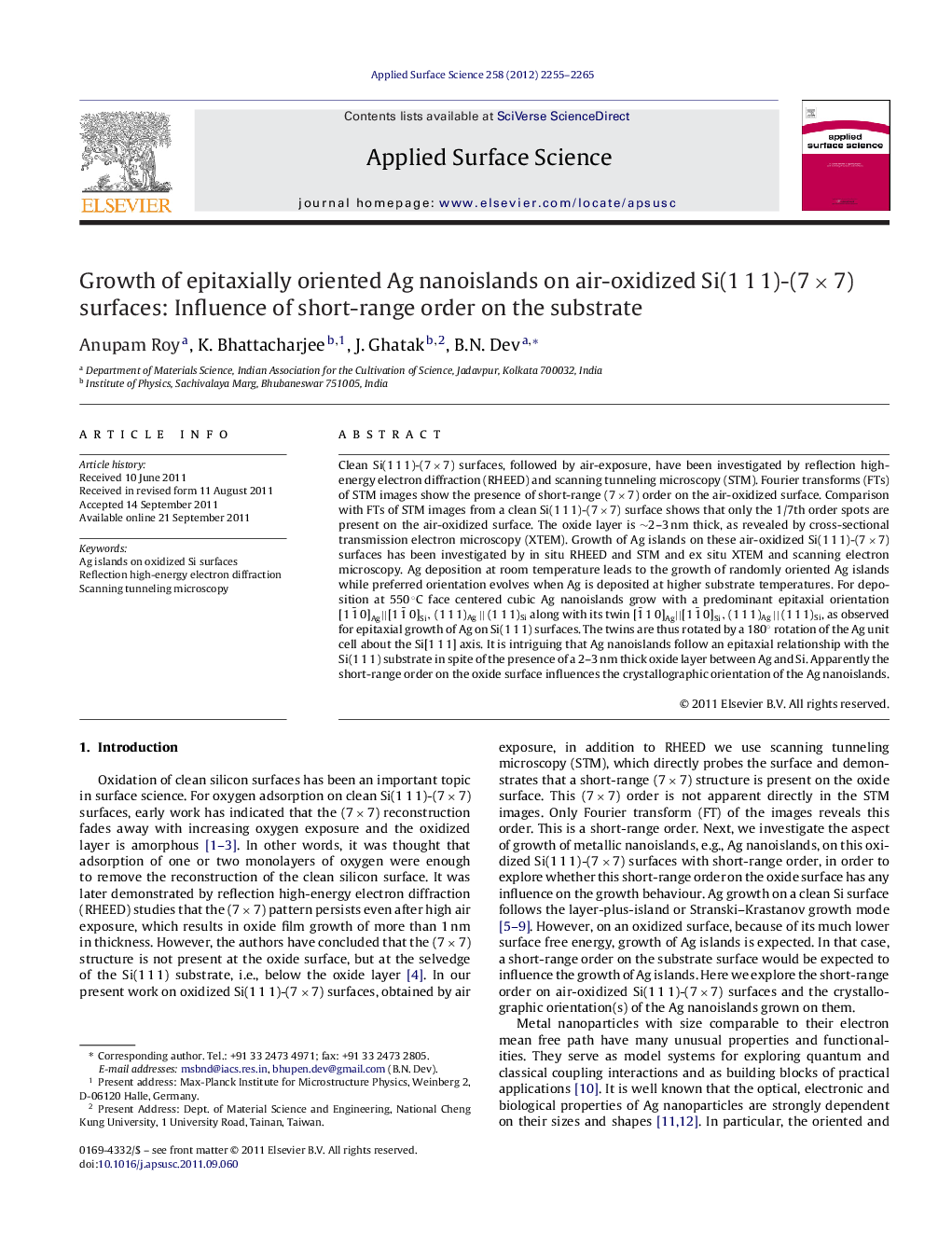| Article ID | Journal | Published Year | Pages | File Type |
|---|---|---|---|---|
| 5366462 | Applied Surface Science | 2012 | 11 Pages |
Clean Si(1 1 1)-(7 Ã 7) surfaces, followed by air-exposure, have been investigated by reflection high-energy electron diffraction (RHEED) and scanning tunneling microscopy (STM). Fourier transforms (FTs) of STM images show the presence of short-range (7 Ã 7) order on the air-oxidized surface. Comparison with FTs of STM images from a clean Si(1 1 1)-(7 Ã 7) surface shows that only the 1/7th order spots are present on the air-oxidized surface. The oxide layer is â¼2-3 nm thick, as revealed by cross-sectional transmission electron microscopy (XTEM). Growth of Ag islands on these air-oxidized Si(1 1 1)-(7 Ã 7) surfaces has been investigated by in situ RHEED and STM and ex situ XTEM and scanning electron microscopy. Ag deposition at room temperature leads to the growth of randomly oriented Ag islands while preferred orientation evolves when Ag is deposited at higher substrate temperatures. For deposition at 550 °C face centered cubic Ag nanoislands grow with a predominant epitaxial orientation [11¯0]Ag||[11¯0]Si, (1 1 1)Ag || (1 1 1)Si along with its twin [1¯10]Ag||[11¯0]Si, (1 1 1)Ag || (1 1 1)Si, as observed for epitaxial growth of Ag on Si(1 1 1) surfaces. The twins are thus rotated by a 180° rotation of the Ag unit cell about the Si[1 1 1] axis. It is intriguing that Ag nanoislands follow an epitaxial relationship with the Si(1 1 1) substrate in spite of the presence of a 2-3 nm thick oxide layer between Ag and Si. Apparently the short-range order on the oxide surface influences the crystallographic orientation of the Ag nanoislands.
⺠A short-range order is observed on an oxidized Si(1 1 1)-(7 Ã 7) surface. ⺠The order is revealed by taking FFT of STM images. ⺠Ag deposition on this oxidized surface causes growth of Ag nanoislands. ⺠Crystallographic orientations of these Ag islands are like epitaxial Ag growth on Si(1 1 1). ⺠Apparently the short-range order on the oxide surface influences the orientation of the nanoislands.
